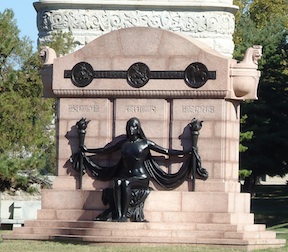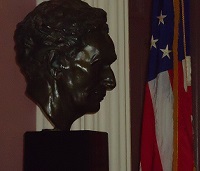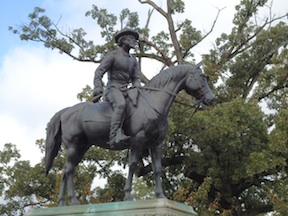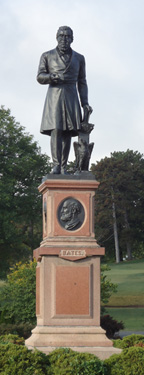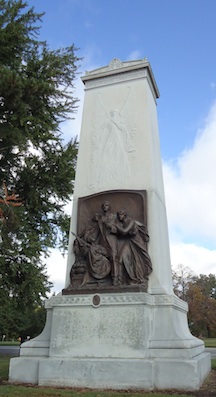Statues, Monuments, and Memorials
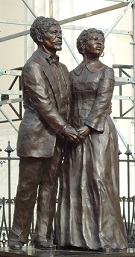 |
Dred and Harriet Scott Old Courthouse east facing Dred Scott Way 11 North 4th Street |
 |
General Ulysses S. Grant Market and Tucker Streets N 38° 37.641′ W 090° 11.918′ For a statue weighing tons, this one got around. In 1891, it stood in the middle of Tucker Street between Olive and Locust and even had a pillared arch with the word “Peace” soaring over it. It was moved to the grounds of the new city hall in 1898--to the backside. Public outcry over the shabby treatment saw it moved again to its present spot on St. Louis’s main street. |
 |
Carl Schurz quotation Market and 14th Streets Front (East end) of the Peabody Opera House |
 |
Robert E. Lee Leonore K. Sullivan Boulevard N 38° 37.394′ W 90° 11.064′
Under orders from St. Louisan Army Chief of Engineers General Charles Gratiot, Lieutenant Robert E. Lee led the Army Corps of Engineers in ridding the river of famous dueling spot Bloody Island. He built rock dikes and revetments to tame the channel which made navigation easier and kept the St. Louis waterfront intact. After the war Robert E. Lee, defeated General-in-Chief of Confederate forces, urged the people of the South to reunite with the north to forge a lasting peace. |


